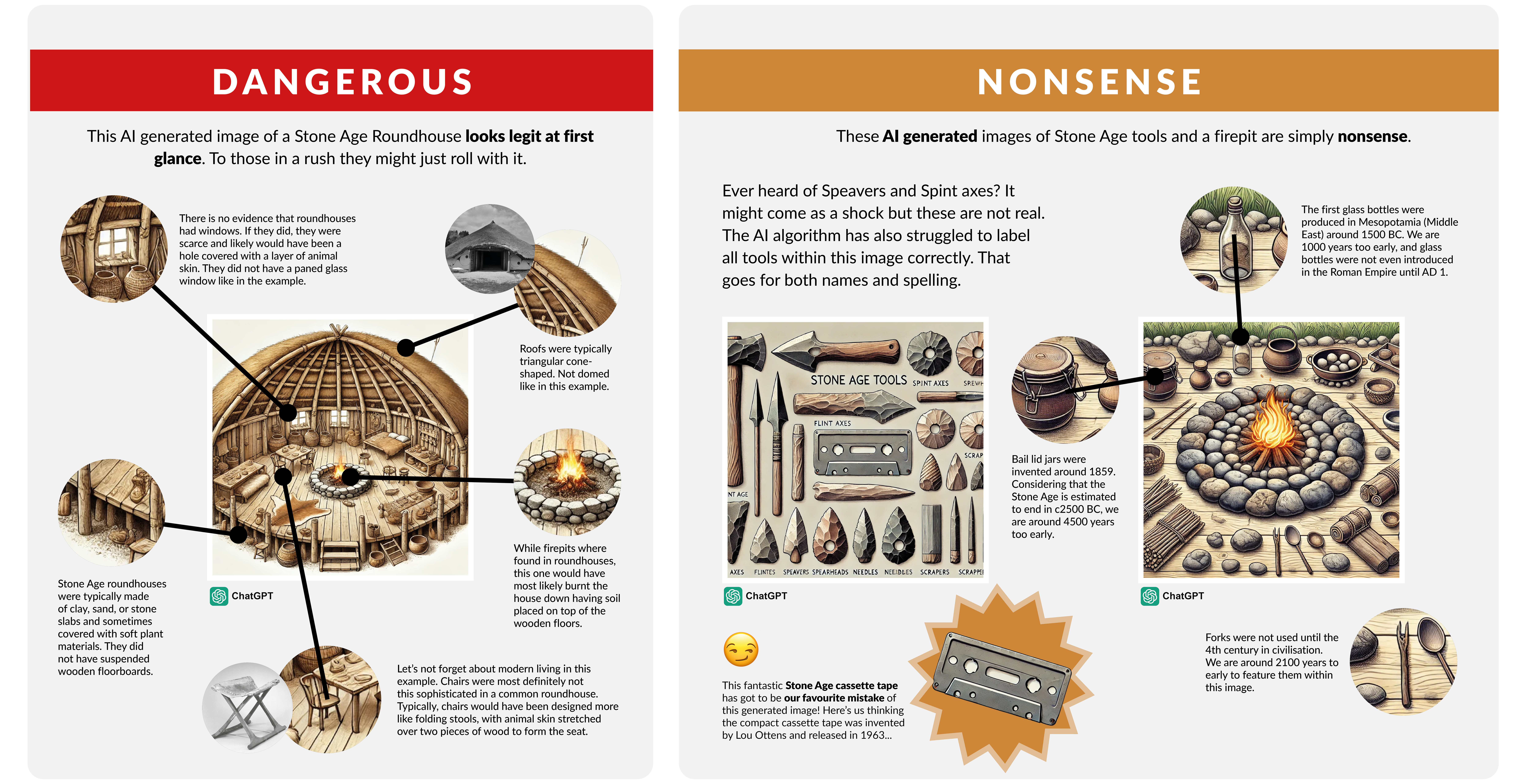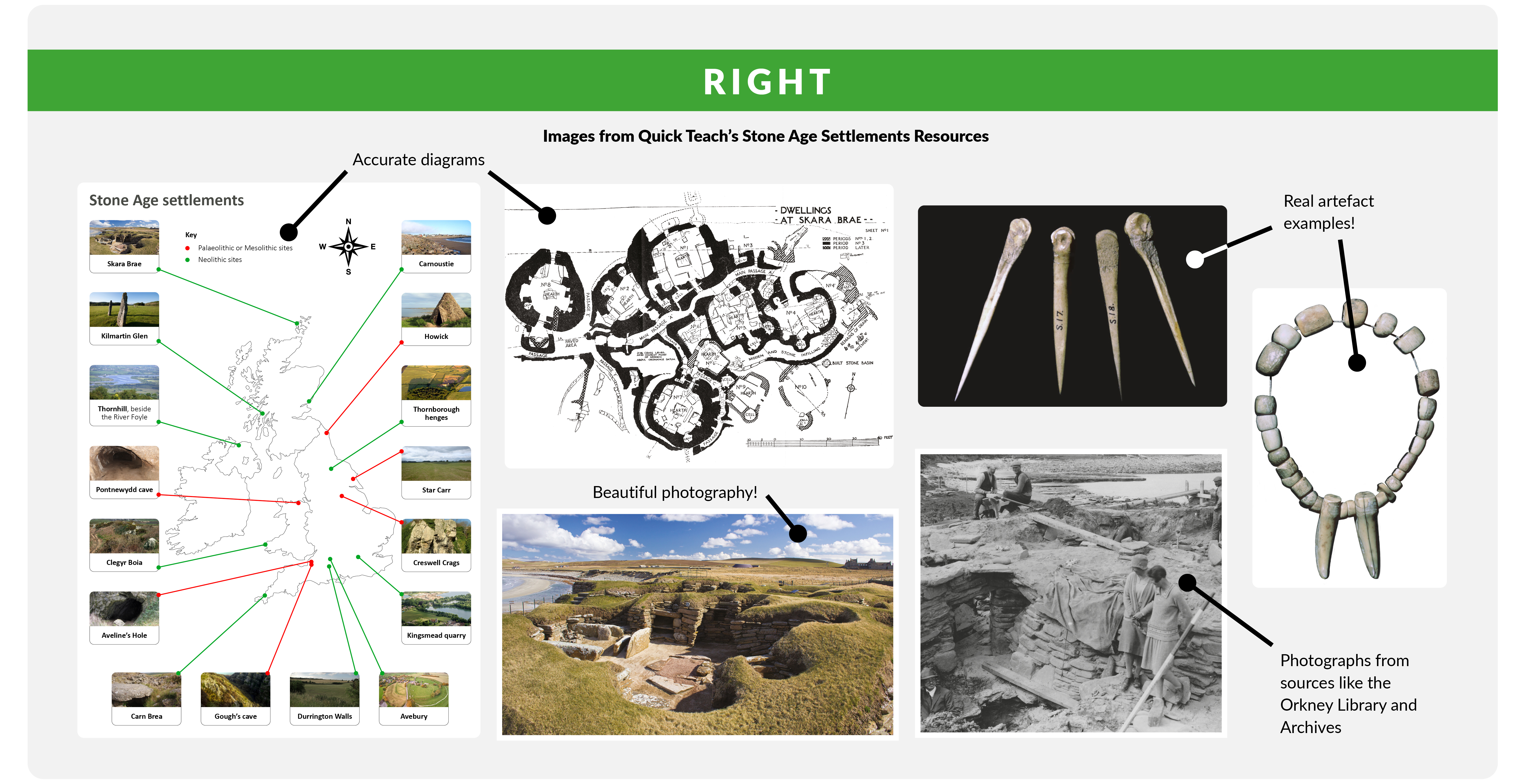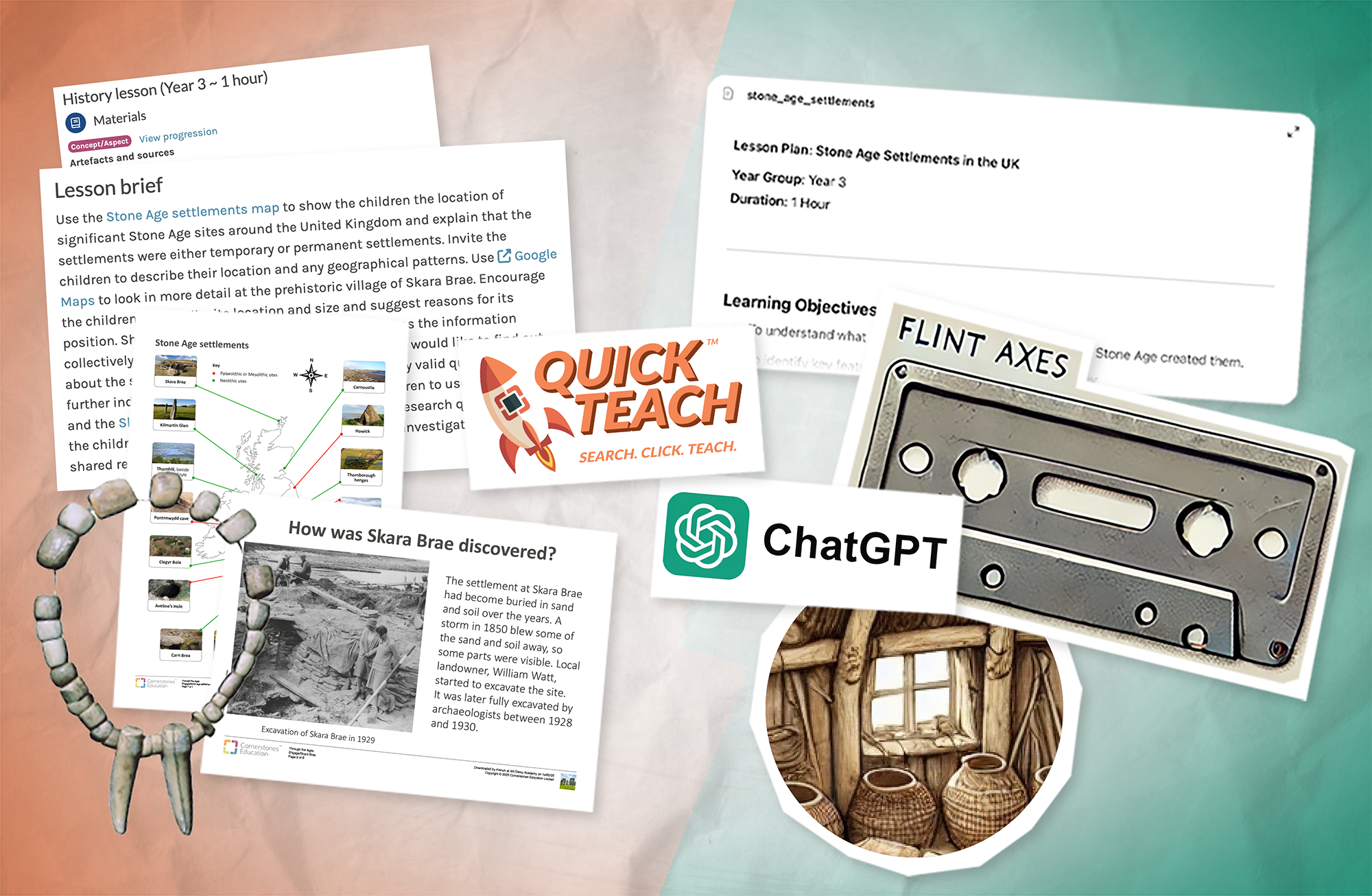Generative AI in Primary Education: My take on the recently released policy paper on generative artificial intelligence (AI) in education.
Having worked in EdTech for over a decade, I have seen firsthand how technology has enabled the growth of online and digital materials and curriculum resources for primary schools. As a result of this, there has been a sharp rise in the number of schools and teachers opting to use this technology to help them create curricula, plan lessons, create resources and save time.
A new dawn
As with all tech, things move at an alarming pace. And so, it is with the development of the newest type of Edtech-Edtech AI. And you cannot avoid the hype. But is Edtech AI all it is cracked up to be? And what do you need to be aware of if you choose to use AI in your classroom?
The recent policy paper released by the DfE (policy paper on generative artificial intelligence (AI) in education) sets out the government’s position that while AI offers incredible opportunities for schools, it must be used safely, effectively, and ethically.
They emphasise:
- Schools must complete thorough research to understand the best use of AI in their establishment.
- Schools must ensure that their selected AI tools are reliable, safe, unbiased, and factually accurate.
- Schools must provide training and support for their teachers to use AI effectively.
In other words, while AI has the potential to save teachers time, they should be cautious about jumping head-first into using AI.
Hidden Dangers of AI in Education
Beyond the positive headlines, there are good reasons to be cautious when using AI to plan your curriculum, create your lesson plans, or make your resources.
Here are some of the things you will need to consider and be aware of when using AI in your classroom.
- Reducing workload: Using AI for administrative tasks like letter writing or report writing may be appealing, but what happens when we rely on AI to perform core teaching responsibilities such as lesson planning? Teaching is a profoundly human profession that thrives on knowing our pupils well. Can AI really plan a lesson or lessons that have the nuances of empathy, creativity, and understanding of the children you teach? Time will tell how effective AI lesson planning can be, with the evidence being how well children learn and how much progress they make following AI lessons.
- Saving time: While AI systems purport to save teacher’s time, it is worth remembering that it is not simply a matter of picking up and going with any content created by AI. Plans and resources will still need teachers to read, check and edit anything, looking for inaccuracies or inappropriate content. It’s also important to check for biased or prejudiced content and for content that infringes on others’ intellectual property. In some cases, teachers still have to search for images to add to resources, which can mean hours of online searching in the hope of finding something that fits.
- Personalising learning: AI is said to be able to plan tailored lesson plans. But this will rely on the data you input about your children and their needs. Be careful, though; it’s crucial that you do not input specific pupil data, as this can then be drawn upon by others through the AI system.
- Checking for misinformation: AI tools are only as good as the data they’re trained on. If that data is incomplete or incorrect, the AI will replicate and amplify those issues. This could lead to the systems drawing on misinformation and creating content that is simply wrong.
- Managing privacy and security risks: AI requires access to large amounts of data to function effectively, including sensitive information about your school. Without robust safeguards, this data could be misused or exposed in breaches, putting children’s privacy at risk.
- Avoiding copyright infringements: It’s important to be aware of the intellectual property (IP) implications when using generative AI tools. Many AI resource makers currently ask teachers to search online and add images from third-party websites to text-based resources. Using such methods of generating materials may put teachers and schools at risk of infringing copyright law.
Actual intelligence, not artificial intelligence
I decided to conduct an experiment to compare the quality of AI with the content curated by our curriculum team housed on Quick Teach. I called this experiment Artificial Intelligence Vs Actual Intelligence, and the task was simple: create a lesson plan about Stone Age settlements for Year 3 children.
The rules:
- I had one hour to design and build the lesson.
- The lesson must include factually accurate content and resources.
- It must be about Stone Age settlements based in the UK.
- It must feature further details on at least one iconic settlement.
- The lesson must be around an hour.
Artificial Intelligence
We began with AI, specifically ChatGPT, as OpenAI is becoming one of the world’s leading platforms.
My prompt: I need a lesson plan and resources with images for year 3 children about Stone Age settlements in the UK. The lesson must be around 1 hour.
It seemed like I was onto a win. The results came back within seconds, and the plan looked very detailed. Click to view the entire plan.
After thoroughly reviewing the plan, my observations were as follows:
| Pros | Cons |
| It was fast, there was no doubt about this. | While the lesson plan spoke about specific resources, no resources were provided. |
| The learning objectives and key vocabulary list given were clear and useful. | Prior knowledge for the teacher and pupils was assumed. The knowledge which was given was both limited and broad. |
| The duration of the intended lesson was spot on at 1 hour. It even provided suggestions for a starter, main and plenary activity. | I still needed to check content/knowledge provided was accurate using other reliable online platforms. |
While the lesson plan was produced within seconds, it’s clear that if you use AI, teachers are still responsible for checking any content generated. If you’re like me, your knowledge of Stone Age Settlements is limited, this is even more important. The lesson plan also required the teacher to provide labelled images of prehistoric tools, shelters and firepits. Something which would require further time to research and develop.
Next steps…
My next prompt was to ask AI to develop the imagery needed for the lesson. My prompt was as follows; can you provide me with the visual imagery for activity 1? At first glance, the images looked beautiful. But let’s dive a little deeper to check for inaccuracies.

The alarming thing here is the image we have categorised as ‘dangerous’ looks believable. Only when you dig a little deeper into the image does its false information become apparent (you can read my notes).
This type of information is not only feeding the AI platform but also feeding the children within the classroom, affecting their knowledge and education. It took me over an hour to fact-check these three photographs, which took me outside of the challenge criteria.
After this, I attempted my final prompt to build the presentation needed for this lesson.
As with the lesson plan, the results for the presentation also came back within seconds. Click to view the presentation.
After reviewing the presentation here’s what I found:
| Pros | Cons |
| The actions within each slide were easy to follow. For example, find an image of. | The information lacked depth. For example, why is Skara Brae considered an important Stone Age site? |
| Each intended slide consisted of a title, image side text and caption. | No PowerPoint file was supplied as a download so all the information would need to be copied across. |
| No imagery. |
It is apparent that AI databases only work with the data they feed from. This means that no matter the quality of the data, true or false, it will be used when gathering results, (which were highly varied regardless of the prompts used within the AI platform). Even if the same prompt is submitted twice, results can be completely different.
I recommend that any teacher using an AI perform, pays attention to the results. This means AI, (currently) is not the quick fix it is presented as. My results clearly show that while AI will provide you with suggestions text, it does not provide the reassurance teachers need to use it without significant checking.
AI is a brilliant tool for making suggestions when you’re looking for lesson ideas. In both the lesson plan and presentation, the starting points were excellent. But this is where I would draw the line. Anything beyond initial ideas, and AI’s abilities started to crumble.
Actual Intelligence
Call me an old man, but unlike robotic data, I will always prefer learning from a trusted source – a source which experts have developed. For example, if I were looking for factual information about the Stone Age, I would first look at museums, reach out to historians or read reports from archaeological sites. This information would most likely be primary research, so its accuracy would be pretty consistent and reliable. Second, I would look into sites like BBC Bitesize or Britannica, which are known globally to have credible reputations regarding their educational content. Now, knowing this doesn’t help the time poor teacher. If I were to start a resource from scratch by this point, I would be highly overwhelmed, so I can see why so many are leaning towards AI, so their pressure and anxiety are turned down a notch. But why can’t we have both? Not AI or a blank canvas but a solid starting point that comes with accurately researched resources? The thing is, we can!
There are many brilliant and passionate education providers in the UK. Take English Heritage, for example, which houses some beautiful resources on its site that are designed for children and specialise in history. Teacher-generated content like that housed on Cornerstones’ Quick Teach is another reliable source for lesson plans and resources, with content available and fact-checked at the click of a button. What’s great is that, with Quick Teach, you can also sign up for a free five-day trial so you can make your own comparisons and make your own mind up.
Pros and cons of Quick Teach
| Pros | Cons |
| Like AI the results were instant. | I tried to think of a con. The only thing I would clutch onto was that the lesson plan was part of a set of sequenced lessons – something I didn’t need at this time but would take advantage of in the future. |
| The lesson brief provided was comprehensive. | |
| Skills and core knowledge provided. | |
| In-depth, beautifully presented resources intended for the lesson brief were provided. | |
| The lesson was designed for Year 3 children. |
View Quick Teach’s lesson plan and resource results.
Other benefits of Quick teach
There were many elements to this result that I didn’t intend to see, but they were there, and it felt like such a bonus. For example, the skills and core knowledge of the lesson were clear and listed. It even showed you previous progression to see if your class had the correct knowledge before teaching the lesson.
During this time, we were only looking for a lesson on settlements. However, it indicated that this lesson belonged to a series of sequenced lessons, meaning we could view what Quick Teach suggested as the children’s next lesson so they could build on their knowledge in suitable chunks.
The resources, as expected, were exceptional. The imagery used within the Skara Brae information pack was simply stunning. Seeing authentic artefacts from archaeological digs and bit-size chunks of factually correct knowledge gave me tremendous relief, knowing that my intended lesson would be great.

Conclusion
| Rule | ChatGPT | Quick Teach |
| We had one hour to design and build the lesson. | ✔ | |
| It must include factually accurate resources. | ✔ | |
| It must be about Stone Age settlements based in the UK. | ✔ | ✔ |
| It must feature further details on at least one iconic settlement. | ✔ | |
| The lesson must be around an hour. | ✔ | ✔ |
| Checking time to make sure the lesson was suitable for my class. | 4 Hours | 3 minutes |
AI is certainly here to stay. And developments will come at a fast pace. However, until we have evidence that it can truly help teachers plan and deliver quality lessons and resources, it should be used cautiously and with moderation. Stick with reputable education products like Quick Teach if you’re a teacher looking for actual lesson plans and ideas WITH their beautifully designed teaching resources.
Remember, it’s important not to be blinded by educational policymakers hailing AI as a solution for busy, overworked teachers. Remember that real solutions for schools would be to end the overwhelming pressures of reduced school budgets, teacher turnover and endless pressures of external accountability such as Ofsted. With these real solutions, we’d have the time and money we need to do things properly and not be searching for middle-of-the-road quick fixes.



